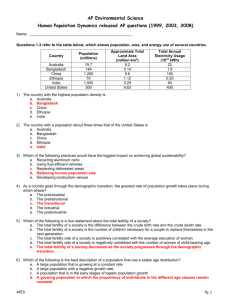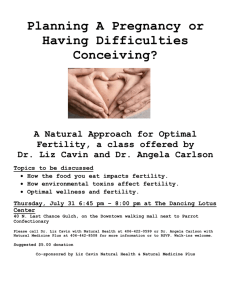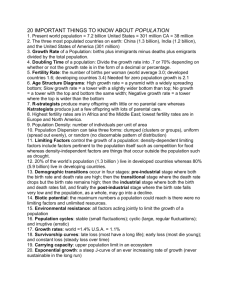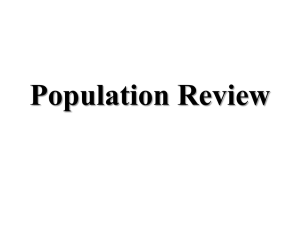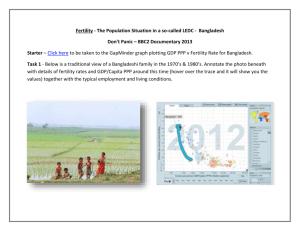Modeling the World Fertility Transition
advertisement
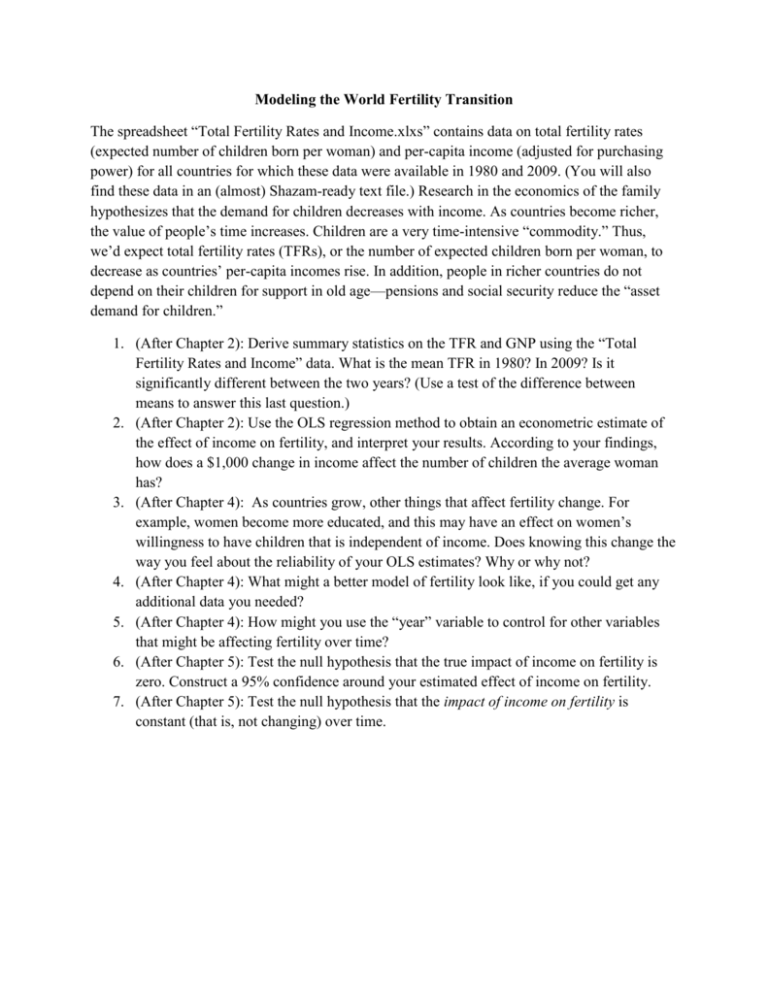
Modeling the World Fertility Transition The spreadsheet “Total Fertility Rates and Income.xlxs” contains data on total fertility rates (expected number of children born per woman) and per-capita income (adjusted for purchasing power) for all countries for which these data were available in 1980 and 2009. (You will also find these data in an (almost) Shazam-ready text file.) Research in the economics of the family hypothesizes that the demand for children decreases with income. As countries become richer, the value of people’s time increases. Children are a very time-intensive “commodity.” Thus, we’d expect total fertility rates (TFRs), or the number of expected children born per woman, to decrease as countries’ per-capita incomes rise. In addition, people in richer countries do not depend on their children for support in old age—pensions and social security reduce the “asset demand for children.” 1. (After Chapter 2): Derive summary statistics on the TFR and GNP using the “Total Fertility Rates and Income” data. What is the mean TFR in 1980? In 2009? Is it significantly different between the two years? (Use a test of the difference between means to answer this last question.) 2. (After Chapter 2): Use the OLS regression method to obtain an econometric estimate of the effect of income on fertility, and interpret your results. According to your findings, how does a $1,000 change in income affect the number of children the average woman has? 3. (After Chapter 4): As countries grow, other things that affect fertility change. For example, women become more educated, and this may have an effect on women’s willingness to have children that is independent of income. Does knowing this change the way you feel about the reliability of your OLS estimates? Why or why not? 4. (After Chapter 4): What might a better model of fertility look like, if you could get any additional data you needed? 5. (After Chapter 4): How might you use the “year” variable to control for other variables that might be affecting fertility over time? 6. (After Chapter 5): Test the null hypothesis that the true impact of income on fertility is zero. Construct a 95% confidence around your estimated effect of income on fertility. 7. (After Chapter 5): Test the null hypothesis that the impact of income on fertility is constant (that is, not changing) over time.

